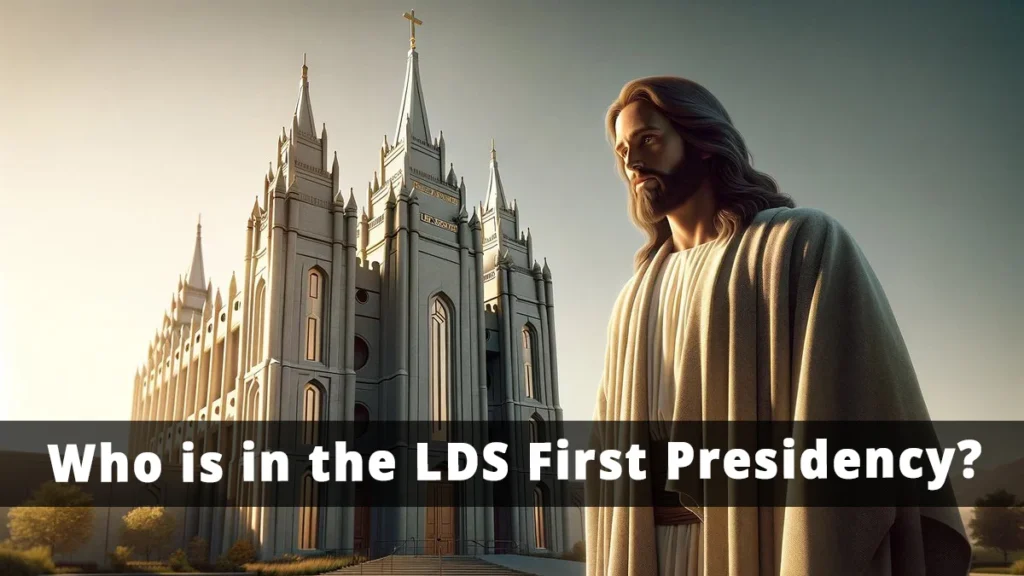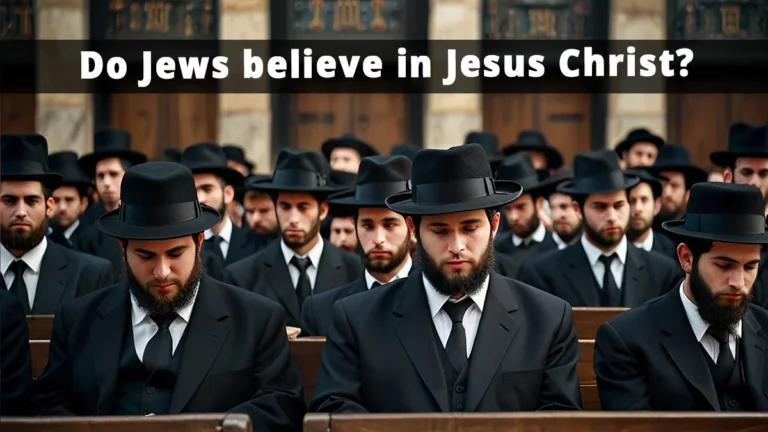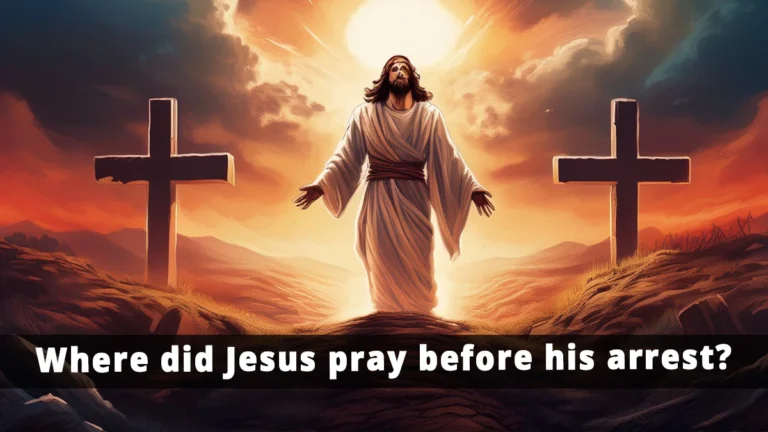Use Coupon FLAT10 for 10% OFF on Order over $100.
Who is in the LDS First Presidency?
Discover the origins, current members, and vital roles of the LDS First Presidency, the highest governing body of The Church of Jesus Christ of Latter-day Saints.

The First Presidency of The Church of Jesus Christ of Latter-day Saints (LDS Church) stands as the highest governing body within the Church, encompassing significant spiritual and administrative roles. This article delves into the origins, current members, responsibilities, and ongoing initiatives of the First Presidency, providing a comprehensive overview of its vital function in the LDS Church.
Historical Context
Foundation of the LDS Church: The LDS Church was founded in 1830 by Joseph Smith, who established the foundational principles and organizational structure that have guided the Church to this day. The First Presidency was created to provide unified leadership and direction for the rapidly growing religious community.
The Establishment of the First Presidency: In 1833, the First Presidency was formally organized by Joseph Smith, consisting of the President of the Church and two counselors. This body was designed to offer spiritual guidance and administrative oversight, ensuring the Church remained steadfast in its doctrines and practices.
Changes Over Time: The composition and responsibilities of the First Presidency have evolved over the years. Different presidents have brought unique perspectives and leadership styles, influencing the Church’s direction and priorities. Significant periods of transition, such as the deaths of sitting presidents or the calling of new counselors, have shaped the First Presidency’s history.
Significant Historical Figures
Many notable leaders have served in the First Presidency, including Brigham Young, who led the Church during its migration to Utah, and Gordon B. Hinckley, who oversaw a period of extensive temple building and modernization. Each leader’s contributions have left a lasting impact on the Church and its members.
Current Members
President Russell M. Nelson
Background and Biography: Born on September 9, 1924, in Salt Lake City, Utah, Russell M. Nelson pursued a distinguished career in medicine before dedicating his life to full-time Church service. A world-renowned heart surgeon, he brought a scientific approach to his ecclesiastical duties.
Major Contributions: Since becoming the President of the LDS Church in January 2018, Nelson has emphasized the importance of personal revelation, temple worship, and the use of the Church’s full name. His leadership has been marked by significant structural changes, including the realignment of church programs to better serve a global membership.
First Counselor Dallin H. Oaks
Background and Biography: Dallin H. Oaks was born on August 12, 1932, in Provo, Utah. A former Utah Supreme Court Justice and accomplished educator, Oaks has a deep legal and academic background, bringing a wealth of knowledge to his role in the First Presidency.
Major Contributions: Oaks has been a vocal advocate for religious freedom and has worked to strengthen the Church’s legal and educational institutions. His tenure as First Counselor has been characterized by efforts to engage with societal issues and promote interfaith dialogue.
Second Counselor Henry B. Eyring
Background and Biography: Henry B. Eyring, born on May 31, 1933, in Princeton, New Jersey, is a respected educator and administrator. With a background in business and academia, Eyring has held various leadership positions within the Church, including Commissioner of Church Education.
Major Contributions: Eyring’s contributions focus on education, service, and strengthening families. He has been instrumental in the Church’s educational initiatives and has emphasized the importance of spiritual and temporal preparedness.
Roles and Responsibilities
Spiritual Leadership: The First Presidency provides spiritual guidance to millions of LDS Church members worldwide. They offer teachings, counsel, and inspiration through various channels, including general conference addresses and official publications.
Administrative Duties: In addition to their spiritual roles, the members of the First Presidency oversee the administrative functions of the Church. This includes managing church operations, directing global missionary efforts, and supervising church education and welfare programs.
Interaction with the Quorum of the Twelve Apostles: The First Presidency works closely with the Quorum of the Twelve Apostles, a group of senior church leaders, to ensure doctrinal consistency and strategic alignment. Together, they form the highest governing bodies of the LDS Church.
Global Outreach and Influence: The First Presidency plays a crucial role in the Church’s global outreach. They travel extensively to meet with members, dedicate temples, and establish new congregations, fostering a sense of unity and connection across diverse cultures and regions.
Key Principles
Faith and Doctrine: The First Presidency upholds the core beliefs and doctrines of the LDS Church, emphasizing faith in Jesus Christ, repentance, baptism, and the gift of the Holy Ghost. They ensure that teachings remain aligned with scriptural foundations and prophetic guidance.
Organizational Structure: The organizational structure of the LDS Church is designed to support its spiritual and administrative functions. The First Presidency, along with the Quorum of the Twelve Apostles, provides leadership and direction to various church departments and local congregations.
Community and Service: Service is a fundamental principle in the LDS Church. The First Presidency encourages members to engage in community service, humanitarian efforts, and acts of kindness, reflecting the teachings of Jesus Christ.
Major Initiatives
Recent Church Directives: Under the leadership of the current First Presidency, the LDS Church has introduced several significant directives. These include changes to the Sunday meeting schedule, the implementation of a home-centered, church-supported curriculum, and adjustments to youth programs.
Global Expansion Efforts: The LDS Church continues to expand its presence worldwide. The First Presidency oversees the establishment of new missions, temples, and congregations, ensuring that resources are available to support the growing global membership.
Humanitarian Projects: The Church is actively involved in humanitarian projects, providing aid to those in need regardless of religious affiliation. Initiatives include disaster relief, clean water projects, and support for refugees and vulnerable populations.
Personal Stories
Impact on Individual Lives: Members of the LDS Church often share personal stories of how the First Presidency’s guidance has impacted their lives. These testimonies highlight the spiritual strength and sense of community fostered by the Church’s leaders.
Testimonials from Church Members: Church members from various backgrounds express their gratitude for the First Presidency’s teachings and leadership. These testimonials provide insight into the positive influence of the First Presidency on individuals and families.
Expert Insights
Perspectives from Religious Scholars: Religious scholars offer valuable perspectives on the role and significance of the First Presidency. Their analyses provide a deeper understanding of the historical and doctrinal context of the Church’s leadership.
Interviews with Church Historians: Interviews with church historians shed light on the evolution of the First Presidency and its impact on the LDS Church. These insights help contextualize the current leadership within the broader history of the Church.
Frequently Asked Questions
How are members of the First Presidency chosen?
Members of the First Presidency are selected through a process of prayerful consideration and inspiration, typically from among the senior leadership of the Church.
What is the significance of the First Presidency in the LDS Church?
The First Presidency holds significant authority and responsibility in guiding the spiritual and administrative functions of the Church, ensuring doctrinal consistency and global outreach.
Which LDS apostle was excommunicated?
One of the most notable excommunications of an LDS (The Church of Jesus Christ of Latter-day Saints) apostle was that of Richard R. Lyman. He was excommunicated in 1943 due to his involvement in an unauthorized polygamous relationship, which was against the church’s official stance on polygamy at the time.
Who was the first LDS president in 1995?
The first LDS President in 1995 was Gordon B. Hinckley. He became the 15th President of The Church of Jesus Christ of Latter-day Saints on March 12, 1995, following the death of Howard W. Hunter.
Who was the first LDS primary president?
The first President of the Primary organization of The Church of Jesus Christ of Latter-day Saints (LDS Church) was Louie B. Felt. She served as the Primary President from the organization’s establishment in 1880 until 1925. Louie B. Felt played a crucial role in the development and expansion of the Primary program, which focuses on the religious education of children within the church.
What is the LDS First Presidency?
The LDS First Presidency is the highest governing body of The Church of Jesus Christ of Latter-day Saints, consisting of the President of the Church and two counselors.
Gifts by Jesus Final Thought
The First Presidency of the LDS Church is essential for both spiritual leadership and administrative governance, guiding millions of members worldwide. With a rich history and a commitment to global outreach, the current First Presidency continues to uphold the Church’s doctrines and expand its influence. As they navigate future challenges and opportunities, their leadership remains a source of strength and inspiration for the LDS community. To delve deeper into their teachings and initiatives, explore official church resources and engage with the vibrant, faith-driven community.



